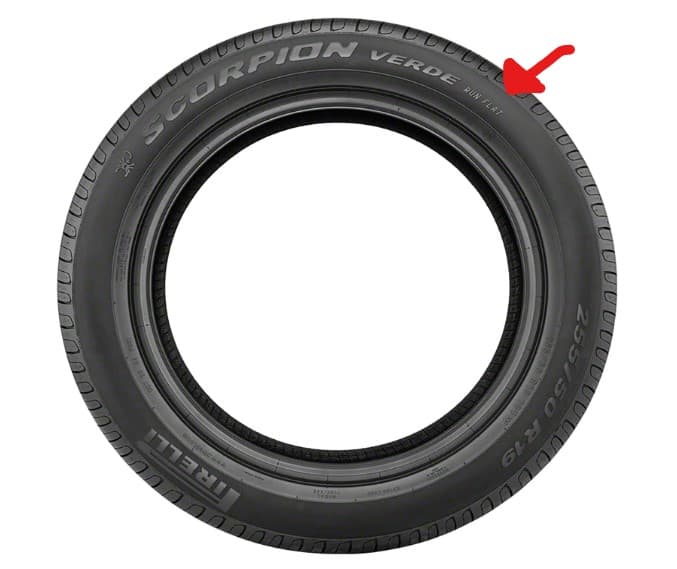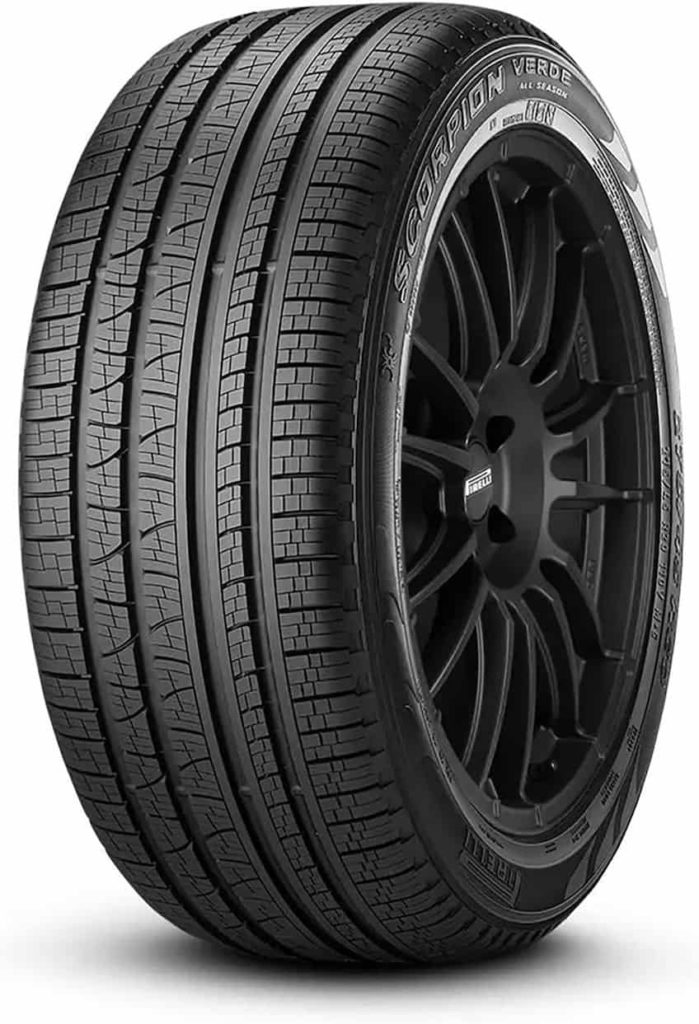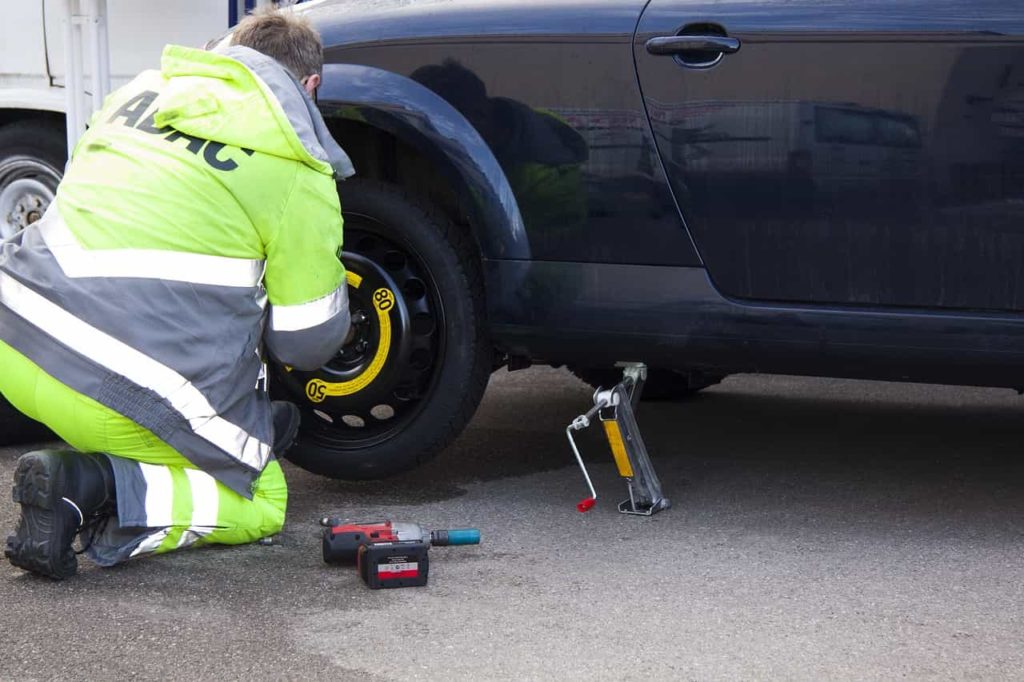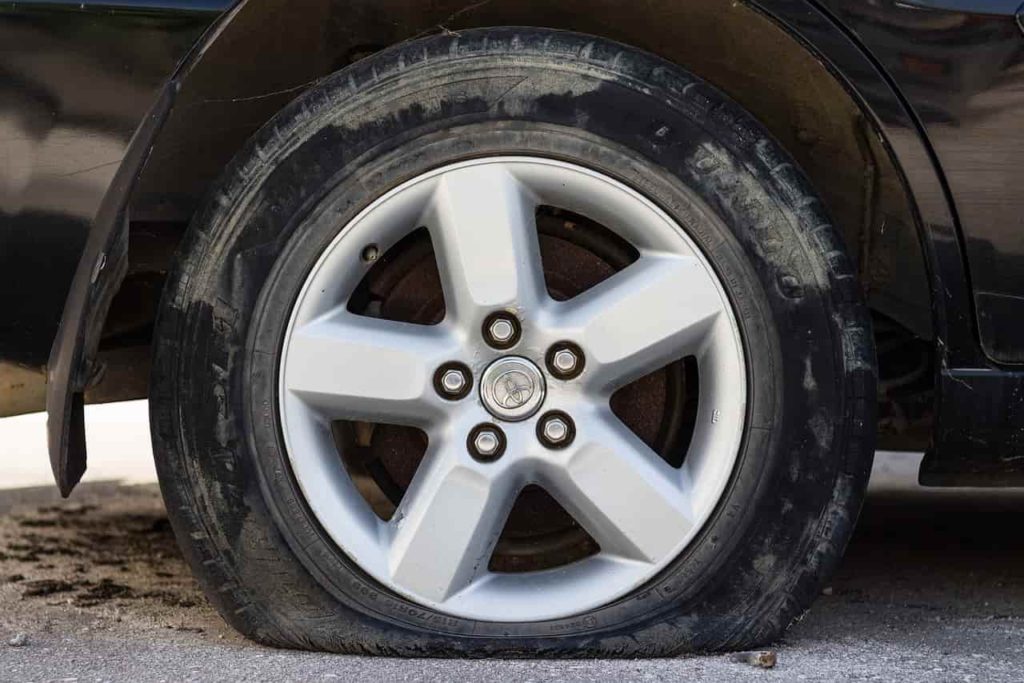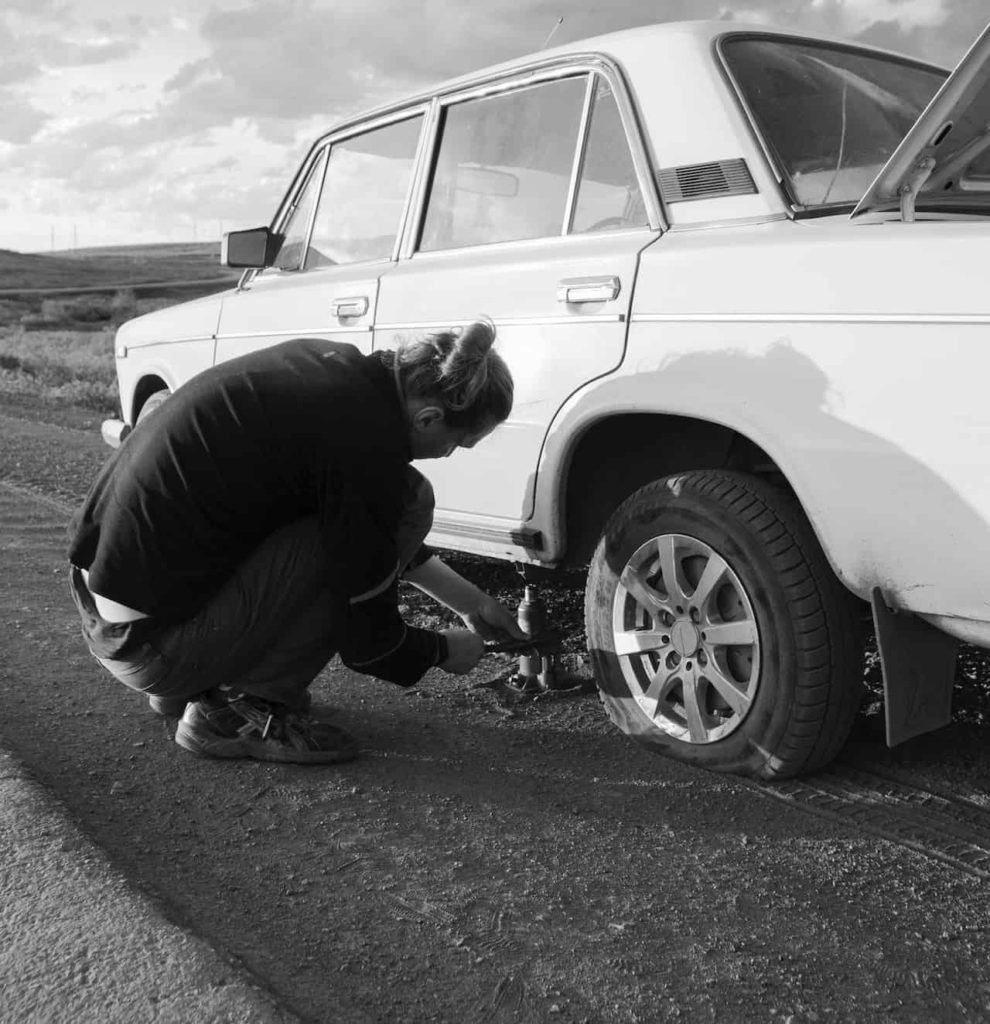Introduction
Run flat tires have revolutionized the way we approach tire maintenance and safety. These innovative tires are specifically designed to enable a vehicle to continue driving even after experiencing a puncture or loss of air pressure, eliminating the need to stop immediately and replace the tire on the side of the road. This groundbreaking technology has gained popularity in recent years due to its numerous advantages and its potential to enhance road safety.
One key aspect worth exploring is what exactly are run flat tires? Essentially, run flat tires are manufactured with reinforced sidewalls that can provide support and maintain their shape even when deflated. This unique feature allows drivers to continue driving for a predetermined distance at reduced speeds, providing ample time and flexibility to safely find a suitable place for tire replacement or repair. Understanding the historical development of run flat tires is vital in comprehending their significance today.
The concept of run flat technology can be traced back several decades when it first emerged as a solution for military vehicles operating in hostile environments. During World War II, military strategists realized that traditional pneumatic tires were vulnerable to punctures, rendering vehicles immobile and putting soldiers at risk. So engineers began exploring ways to create reinforced tires that would remain operational even with reduced air pressure or damage. Over time these military-inspired advancements were adopted by automobile manufacturers seeking innovative solutions for consumer vehicles.
Today’s run flat tires represent the culmination of years of research and development aimed at enhancing driver safety while minimizing inconvenience caused by sudden tire failures. Run flat tires have emerged as game-changers in the automotive industry due to their ability to provide extended mobility after punctures or air loss.
What are Run Flat Tires?
Run-flat tires are specialized pneumatic tires that are designed to continue functioning even after experiencing a puncture or complete loss of air pressure. Unlike traditional tires that immediately deflate when punctured, run-flat tires incorporate advanced technologies to maintain their structural integrity and support the vehicle’s weight for an extended period. These innovative tires essentially provide drivers with an extended mobility option, enabling them to continue driving safely for a limited distance until they reach a service station or repair facility.
Importance of Tire Safety
Tire safety is paramount not only for protecting the driver and passengers but also for ensuring the overall performance and longevity of a vehicle. Properly maintained tires contribute significantly to critical factors such as traction control, braking efficiency, stability during cornering maneuvers, fuel economy, and overall comfort while driving.
Neglecting tire safety can lead to hazardous situations such as blowouts or loss of control on slippery surfaces. Statistics reveal that tire-related issues account for a significant percentage of road accidents worldwide.
Regular inspection and maintenance checks are crucial to identify potential problems like uneven wear patterns or inadequate tread depth before they escalate into more serious issues. Moreover, investing in technologically advanced tire solutions like run-flat tires can provide an added layer of protection by reducing the risk of sudden tire failure and enhancing vehicle stability in emergency situations.
How Run-Flat Tires Work
Run-flat tires are a revolutionary innovation in the world of automotive safety. Unlike traditional tires, run-flats are specifically designed to provide continued functionality even after a loss of air pressure. This enables the vehicle to be driven for a limited distance before requiring immediate replacement or repair. This technology is extremely valuable in situations where you don’t want to or cannot pull over and put a spare tire on. This is made possible by three key features: reinforced sidewalls, self-supporting design, and advanced rubber compounds.
Reinforced Sidewalls
The sidewall of a tire is what allows the tire to keep its shape. One crucial element of run-flat technology lies in the construction of reinforced sidewalls. These sidewalls are fortified with additional layers or inserts that provide increased structural support and rigidity. By reinforcing the tire’s sidewalls, manufacturers ensure that even in situations where air pressure drops significantly or is lost entirely, the tire will remain intact and maintain its shape and stability.
Self-Supporting Design
Another integral aspect of run-flat tires is their self-supporting design. This means that even without air pressure, these tires possess enough inherent strength to bear the vehicle’s weight without collapsing or deforming excessively. Through a combination of specialized materials and engineering techniques, run-flats can withstand the added stress when operating under deflated conditions.
Advanced Rubber Compounds
The development of advanced rubber compounds has been pivotal in improving the performance and durability of run-flat tires. These compounds are specifically formulated to endure high temperatures generated during driving while maintaining grip on various road surfaces. By integrating cutting-edge rubber blends with superior heat dissipation properties into their manufacturing process, tire manufacturers ensure that run-flats exhibit exceptional resistance against wear and tear caused by prolonged use under unfavorable circumstances.
Advantages of Run-Flat Tires
The advantages offered by run-flat tires go far beyond conventional tire safety measures. One notable advantage is enhanced safety and security.
In the event of a sudden loss of air pressure, run-flat tires enable drivers to maintain control and stability of their vehicle which reduces the risk of accidents or collisions. This added level of safety can be especially crucial in situations where changing a flat tire may not be immediately feasible or safe, such as during inclement weather or on busy highways.
Run-flat tires provide extended mobility after tire damage occurs. Rather than being stranded on the side of the road waiting for assistance or having to rely on potentially unsafe makeshift solutions like inflating with sealants, drivers with run-flats can continue driving for a limited distance at reduced speeds until reaching a suitable location for repair or replacement.
This not only saves time but also provides peace of mind by minimizing disruptions and inconvenience caused by unexpected tire failures. Run-flat technology represents a significant advancement in vehicular safety and convenience.
By incorporating reinforced sidewalls, self-supporting design principles, and advanced rubber compounds into their construction, these tires offer enhanced safety and security while providing extended mobility after tire damage occurs. Their ability to sustain functionality even under deflated conditions ensures that drivers have an added layer of protection and peace of mind when navigating roads.
Types of Run-FlaT sYSTEMS
Run-flat tires have revolutionized the concept of tire safety, providing drivers with an added layer of security and peace of mind. Two main types of run-flat systems exist: Self-Supporting run-flats (SSR) and Auxiliary Supported run-flats (ASR). Both systems share the primary goal of allowing vehicles to continue driving even after a significant loss of air pressure, minimizing the risk associated with sudden tire failures. While SSRs rely on reinforced sidewalls and specialized rubber compounds, ASRs incorporate additional components to ensure sustained mobility.
Self-Supporting Run-Flats (SSR)
The construction of SSR tires involves several key elements that contribute to their ability to bear the vehicle’s weight when air pressure is lost. These tires possess stiffer sidewalls that are reinforced with heat-resistant inserts. These inserts enhance structural integrity, enabling them to support the weight even under reduced or no air pressure conditions.
Bead fillers are also incorporated into SSRs to provide additional support during loss of air pressure by preventing the beads from separating from the rim. Specialized rubber compounds are utilized in SSR tires to combat heat buildup caused by prolonged driving under low or zero air pressure conditions. These compounds are designed to dissipate heat efficiently as they maintain contact with the road surface. This feature prevents tire damage due to excessive heat buildup during extended drives on underinflated or deflated tires.
Benefits and Limitations
One notable benefit offered by SSR tires is their ability to allow vehicles to continue driving at reduced speeds for extended distances after experiencing a loss in air pressure. This enables drivers to reach a safe location for repair or replacement without compromising their safety or causing further damage to the tire.
However, it is worth noting that SSR tires are not universally available for all vehicle models. Due to specific design requirements and compatibility issues, certain vehicle models may have limited options when it comes to SSR tire availability.
Auxiliary Supported Run-Flats (ASR)
Auxiliary Supported run-flats (ASR) utilize additional components beyond stiffer sidewalls to ensure sustained mobility even after a significant loss of air pressure. These components include internal support rings or bands which provide an increased load carrying capacity and reinforce the tire’s structure. ASRs incorporate reinforced wheel rims or inserts that play a crucial role in supporting the weight of the vehicle during low-pressure situations.
To further enhance performance, ASRs may require additional modifications to the suspension system. These modifications can include adjustments that better accommodate the unique characteristics of ASR tires, such as their increased load-bearing capacity and altered handling dynamics due to different structural elements.
Benefits and Limitations
One key advantage offered by ASR tires is their ability to handle increased load carrying capacities compared to SSRs. This makes them suitable for heavier vehicles or those frequently used for transporting heavy loads. Additionally, ASRs often provide higher speed ratings compared to SSRs due to their enhanced structural integrity and advanced reinforcement features.
It’s important to consider that with these added benefits come certain limitations as well. The installation of internal support rings or bands may reduce the overall ride comfort due to changes in tire stiffness and response characteristics.
While ASR tires offer higher speed ratings than SSRs, they may not provide the same extended driving capabilities at reduced speeds after experiencing a loss of air pressure. By understanding the construction features, benefits, and limitations of both Self-Supporting run-flat Tires (SSR) and Auxiliary Supported run-flat Tires (ASR), drivers can make informed decisions when choosing the most suitable run-flat system for their vehicle.
Technological Advancements in Run-Flat Tires
Advancements in technology have played a pivotal role in enhancing the performance and safety of run-flat tires. The tire industry has embraced the challenge of developing advanced materials and manufacturing techniques to meet the demands of modern vehicles. With a focus on durability, reliability, and improved handling, tire manufacturers have made significant strides in this field.
The Building Blocks
Silica-based rubber compounds have emerged as one of the key advancements in run-flat tire technology. By incorporating silica into the rubber matrix, these tires exhibit excellent traction, lower rolling resistance, and enhanced fuel efficiency.
Silica’s ability to disperse heat efficiently also contributes to longer tread life, ensuring optimal performance even under challenging driving conditions. Reinforcement fibers such as Kevlar, Aramid, and Carbon Fiber have revolutionized run-flat tire construction.
These high-strength fibers are strategically placed within the tire’s structure to provide added rigidity and strength without compromising on comfort or ride quality. Kevlar’s exceptional tensile strength makes it ideal for reinforcing sidewalls, while Aramid fibers offer excellent heat resistance properties. Carbon fiber is renowned for its lightweight yet robust nature – an ideal choice for enhancing overall tire stability.
Nanotechnology applications have also made their way into tire design. By integrating nano-scale particles into rubber compounds, tires can achieve superior wet traction and reduced rolling resistance while maintaining optimum grip on dry surfaces. Nanotechnology enables better dispersion of fillers within the rubber matrix, resulting in improved wear resistance and greater durability over time.
Disadvantages of Run-Flat Tires
Ride Comfort
One significant disadvantage of run flat tires is the compromise they make on ride comfort. Due to their reinforced sidewalls and stiffer construction, run flat tires tend to provide a harsher ride compared to standard tires. The reduced sidewall flexibility and increased stiffness can result in a greater transmission of vibrations and road imperfections to the vehicle’s cabin, leading to a less smooth and less comfortable driving experience.
This can be particularly noticeable when encountering rough or uneven road surfaces. The stiffer nature of run flat tires may also affect cornering grip and handling dynamics, as they may not conform as well to the road surface under aggressive maneuvers.
Replacement and Repair Issues
Another drawback associated with run flat tires is the complexities involved in their replacement and repair processes. When a run flat tire sustains damage or reaches its service life, it cannot simply be repaired like a conventional tire; it must be replaced entirely. This can become an inconvenience for owners because finding replacement run flat tires might be more challenging due to their specialized nature.
Moreover, replacing these tires can often prove more expensive than regular ones due to their unique technology and construction methods. Not all repair shops or service centers are equipped with the necessary tools or expertise required for handling run flat tire replacements effectively, further adding to potential inconveniences for vehicle owners. After working in automotive shops for many years I can tell you first hand that replacing run-flat tires without the proper tire mounting machine is dramatically more difficult than replacing standard tires.
Costs
The cost of acquiring run-flat tires is notably higher compared to standard tires, primarily due to the specialized technology and materials used in their construction. This expense is accentuated by the fact that when run-flat tires are punctured they often necessitate a complete replacement rather than a more economical repair which is typically possible with standard tires. Additionally, the potential decrease in fuel efficiency associated with run-flat tires due to their increased weight and rolling resistance introduces an ongoing cost factor. It’s worth noting that the elimination of a spare tire and the associated maintenance costs can offset some of these expenses.
Run-Flat Tires Vs. Standard Tires
When comparing run flat tires to their standard counterparts, it becomes evident that there are significant differences in both performance and cost.
Aspect | Run-Flat Tires | Standard Tires |
Puncture Response | Can be driven on for a limited distance (generally up to 50 miles) at a reduced speed even after a puncture. | Will deflate immediately following a puncture, rendering the car undrivable until the tire is repaired or replaced. |
Weight | Generally heavier due to reinforced sidewalls. | Lighter than run-flat tires. |
Comfort | Tend to provide a stiffer ride as they are designed to be able to support the weight of a vehicle even when deflated. | Typically offer a smoother ride than run-flat tires. |
Price | More expensive due to the extra technology and materials used. | Typically less expensive. |
Replacement | Often need to be replaced rather than repaired after a puncture. | More likely to be repairable after a puncture. |
Availability | Limited sizes and models compared to standard tires. | Wide range of sizes and models available. |
Spare Tire | Not necessary, freeing up trunk space. | A spare tire is required. |
Lifespan | May have a slightly shorter lifespan due to the harder compound used. | Typically has a longer lifespan, but this can vary depending on use, maintenance, and tire quality. |
Fuel Efficiency | Less fuel efficient due to increased rolling resistance. | Generally more fuel efficient, but this can also depend on the tire design and compound. |
Safety | Increases safety as they can be driven on for a while after a puncture, reducing the risk of being stranded or having to change a tire in a dangerous location. | While safe, a puncture will require immediate attention and could potentially lead to a risky situation. |
How Can You Tell if a Tire is a Run-Flat tire?
To determine whether a tire is a run-flat or not, first look at the tire’s sidewall for markings or designations. Run-flat tires often have specific symbols or abbreviations embossed, such as “RFT” for Run-Flat Technology, “ZP” standing for Zero Pressure, “RF” for run flat, or “SSR” indicating Self-Supporting Run-flat tire, among others. The symbols may vary by tire manufacturers.
Conclusion
Innovation in run-flat tires has come a long way thanks to advanced materials like silica-based compounds that enhance traction and durability. Reinforcement fibers, such as Kevlar, Aramid, and Carbon Fiber, have significantly improved the overall strength and stability of these tires without sacrificing comfort. Additionally, nanotechnology applications have made strides in optimizing tire performance, offering better grip and wear resistance.
With continued advancements in technology, we can look forward to even safer and more efficient run-flat tire options that ensure peace of mind on the road. Remember that investing in high-quality run-flat tires not only provides an added layer of safety but also offers convenience, as they allow drivers to continue their journey after experiencing a puncture or loss of air pressure.
So why settle for ordinary tires when you can enjoy the benefits of these impressive technological advancements? Embrace the future of tire technology and elevate your driving experience with run-flat tires that offer both security and peace of mind.
